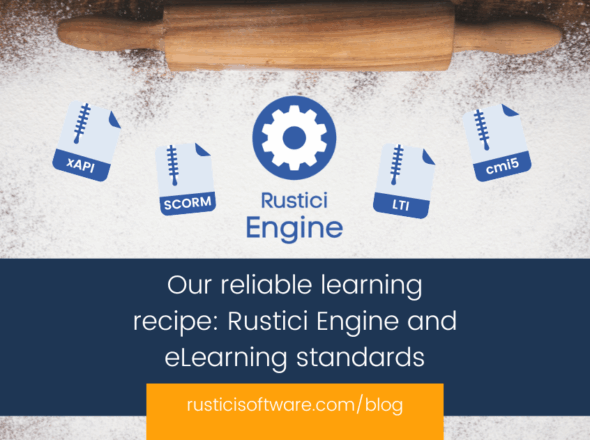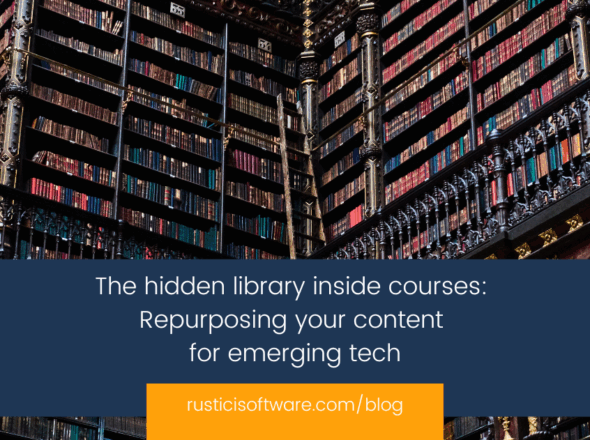I’ve worked in the learning standards space for a long while now, and over the last 12 years I’ve often been asked “What even is a learning standard?” and “What makes up a learning standard?”
Let’s face it, if you’re asking those questions you’re probably a learning geek, otherwise you wouldn’t have reached this post or read past the title (in case you landed here accidentally). Now imagine, if you will, 8-20 of the biggest learning geeks ever getting together on at least a weekly basis to discuss, argue about, and occasionally agree on the most exacting technical language you’ve ever read. Well, that’s a standards working group. And when I mean “exacting,” I’m talking about teasing out the nuances in the use of the word “shall” compared to the word “must” or making sure that the word “should” isn’t used for evil. And after years of doing that, what is produced is hopefully the latest and greatest learning standard.
But just conveying how they came to be still doesn’t capture what they are. After training our new hires, speaking at conferences and events, and weeks and weeks of working group participation, the best way I’ve come up with to explain learning standards is to break them down into what I like to call the “Five Pillars.” These Five Pillars represent the pieces of an implementation that enable interoperability between systems playing and tracking learning content (i.e. LMS, LXP, or their ilk) and the learning content or experience itself.
Each of the Five Pillars – Package, Launch, Data Model, Transfer Protocol, and Information Model – provide an essential piece in an end-to-end implementation that, when done well, leads to advanced capabilities with straightforward interoperability. While some standards provide one or two pieces, I believe it is having all five that leads to sustained use over decades, like SCORM has enjoyed.
Package
A package is essentially what groups content together and is handed off to a Learning Management System (LMS) for your learners to interact with. It is usually in the form of a .zip file and contains some metadata or files along with metadata. Out of all of the five pillars, the package is the most tangible one to LMS administrators and instructional designers. Discover more about SCORM packages and cmi5 packages.
Launch
Launch is directly related to the LMS (or other launching system, such as an LXP) and a package. Launch is the process that brings the two most important parts of this transaction together: the package with the content and the learner interacting with it. Launch processes generally include retrieval of initialization data, such as current completion/success status or bookmark, authorization handshake or credentials for retrieving content assets and communicating data back to the LMS, basic learner identification information, and of course, display of content assets as configured by the package metadata.
Data Model
The data model describes the format of the data captured. Regardless of which learning standard you’re using, what the content is, or how the learner accesses it, we know we’re going to record some data to look at later. This data could be to confirm completion of a compliance course or recording what score a learner achieved on product training. This format is very specific, like a JSON object, XML, boolean, a set of numbers, or simply a string representing bookmarks. The data model is the structure of the data, but it doesn’t say what the data actually means. The data may be used to represent the notions of score, completion, and success, but the data model by itself doesn’t provide this meaning (see Information Model below).
Transfer Protocol
The transfer protocol describes how we’re going to communicate data from one system to another, most likely communicating from the content to the LMS or sometimes vice versa. In other cases, it could be from an LMS to a learning analytics platform or from an LMS to another LMS. Each one of the learning standards needs to have a set of data that it’s trying to capture and also understand it needs a way to communicate that data.
Information Model
The information model establishes rules for, and gives meaning to, the elements of the data model. It’s not enough just to say that something is a boolean or a string, for example, we need to know what that boolean or string or other data model element is intended to mean so that humans can understand the recorded data. Until we ascribe meaning to a data element, we don’t know that a true or false value in the data model actually means this person completed a piece of content, completed a quiz, passed a quiz, or scored a 98. Without laying out the rules for the data, it is impossible to know that a score of 105 isn’t consistent with a percentage based scoring concept (assuming no bonus credit) or that a new success status shouldn’t be captured when the content is just being reviewed or browsed.
Breaking down the standards
How do the five pillars work with current learning standards? Well, I’m going to let my pedantic side shine and say for the sake of brevity and clarity, I’m referring to current learning standards and the components of the Five Pillars only.
- LTI – only has the concept of Launch.
- SCORM – has all Five Pillars.
- xAPI – is missing the concepts of Package, Launch, and Information Model.
- cmi5 – has all Five Pillars (and uses xAPI for the Data Model and Transfer Protocol).
- AICC – has all Five Pillars.
Wrapping up
We take those Five Pillars, or five pieces of a kind of construction material, and put them together to make a full learning standard that will be able to be played on a system that supports that standard. If you have a learning standard question, we’ve probably heard it and might even have a unique way to answer, like with the Five Pillars. Just reach out, we’re happy to help.


